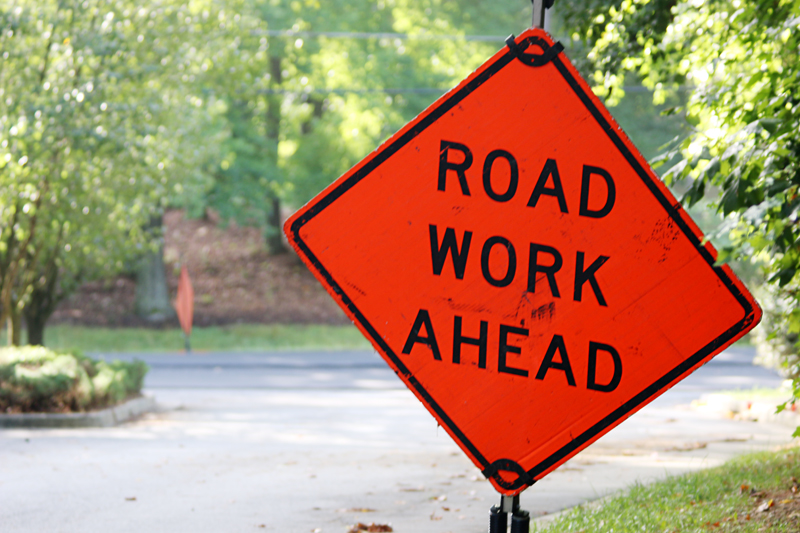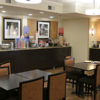T he airplane pulls up to the gate and comes to a complete stop. You finally leave what was essentially your home in the air for several hours and ply through the airport to get to your rental car if you are visiting somewhere; or perhaps your own car if you are finally coming home.
You drive the vehicle out of the airport and onto a divided roadway with at least two lanes for each direction. Traffic is flowing smoothly. It will not be long until you settle in and relax for the night…

…or so you thought. Road construction ahead means that at least one lane will be closed to traffic — and that means that the vehicles in the closed lane must eventually merge into the next lane.
What is the most effective way of doing this to minimize delays — and possibly help avoid road rage in the process?
How to Merge in Traffic Most Effectively
“Transportation departments in Missouri and Kansas have joined Minnesota and Washington in urging drivers to use the zipper merge method when approaching lane closures, most often associated with road construction”, according to this article written by Bill Draper of the Associated Press. “Using all available lanes until the last moment, then alternating entry into the open lane, helps reduce accidents by keeping both lanes moving at the same speed,” said David Silvester — who is an engineer of the Department of Transportation of the state of Missouri — who claims that the zipper merge technique is easy, as it is not “rocket science.”
The zipper merge method works as you might imagine: traffic in two lanes merge together similarly to the way a zipper is closed where the two rows of protruding teeth integrate with each other.
In fact, this video from the Department of Transportation of the state of Missouri uses adults wearing cardboard vehicles to emulate traffic to illustrate how taking turns merging using the zipper merge method works — as well as solicits the thoughts and reactions of children who observe how ridiculous are the other methods of merging traffic, as the children seem to understand the concept better and faster than some adult drivers.
Officials in the state of Missouri began to promote the concept of the zipper merge method — as a public relations campaign to change how drivers deal with the closures of lanes — earlier this year “ahead of what was expected to be a heavy road construction season.”
Where to See the Zipper Merge Method in Action
I learned how to drive in New York; and I had driven there for years. In a metropolitan area of approximately 11 million people, space is at a premium — so we always used the zipper merge method of waiting until the absolute last second before merging into the next lane.
If you want to see and experience the zipper merge method at its finest, just drive eastbound on New Jersey State Highway 495 to the entrance of the Lincoln Tunnel — which is comprised of a total of three tunnels, each of which is two lanes wide — to head east into New York; and for maximum effect, drive in during the heart of rush hour on a typical weekday morning.
Although all three tunnels may have been dedicated to one direction of traffic in rare situations — such as an extreme emergency — I have never witnessed that ever occurring; nor do I recall that ever happening, as it would mean that traffic traveling in the reverse direction would have to find a different crossing of the Hudson River.
Prior to entering the tunnel, there is a toll plaza where your money is collected; and the toll plaza is 13 lanes wide, each with a booth. Assuming that all of the lanes of the toll plaza are open during the morning rush hour and that two of the tunnels are open in the eastbound direction, all of the vehicles must merge from 13 lanes into only four lanes — two lanes for each tunnel, which means that there is a physical barrier between the two sets of lines which can potentially further complicate the traffic pattern.
This is not for the weak hearted driver. Other vehicles — including taxi cabs piloted by overly aggressive drivers and large buses and trucks — will literally be mere inches from your vehicle, all jockeying for position along the breakdown lanes, over solid white lines, around orange pylons and in gores in that short distance between the toll plaza and the actual tunnels.
The spectacle emulates a delicate ballet cloaked with fumes amidst a cacophony of idling engines. It has to be seen to be believed, as mere words simply do not accurately describe the choreography which is involved in this exhausting — literally — ritual; similar to the virtually impossible feat of combining several zippers into one.
Why Drivers Do Not Use the Zipper Merge Method in Some Areas
I am currently based in the Atlanta metropolitan area. Imagine the culture shock I experienced when a lane was closed ahead for construction — and that open lane prior to the construction zone is basically clear of traffic while most of the vehicles are backed up in the next lane.
Being originally from New York, I would naturally use that lane until the last second; but some of the other drivers would be offended, thinking I was rudely attempting to unfairly cut into the line instead of being polite and waiting my turn as a way of being considerate of fellow motorists. As the mildest form of vigilante justice, sometimes drivers will use their vehicles to partially or totally block the free lane — which was still legal to use as we were not yet at the point where it was officially closed — so that other vehicles would not be able to pass them. After all, if that lane was meant to be closed to traffic, would it not be closed?!?
Drivers generally tend to be polite and follow the rules — even unwritten ones — and get upset when others do not do so, according to the aforementioned article. When someone else violates what is essentially an unwritten — and automatically perceived — rule, we tend to become angry, frustrated and irritated. That is especially true when we know that the other drivers are gaining an advantage — despite that their actions are perfectly legal — and this is what I typically encountered driving in the state of Georgia…
…but after struggling for years about what to do with merging behavior by drivers on roads where the number of lanes are reduced for one reason or another, officials in a growing number of states in the United States are seeking ways to change that polite driver mindset with regard to merging at the latest possible opportunity, as the zipper merge method is apparently the most effective and efficient way of merging traffic.
As an example, “Kansas has taken a more deliberate approach that includes using electronic signs and measuring the pace of traffic flow with Doppler radar”, according to the aforementioned article. “The state will review the results of the pilot project and determine whether it’s worth expanding next year.”
Summary
As you can imagine, I completely support the zipper merge method. To me, having an empty open lane not being used — especially when traffic is at the pace of a snail — is simply a waste.
The merging of traffic has to be done at some point. Why not encourage it to occur at the point where the lane is closed and the construction zone begins?
As with virtually anything else in life, courtesy and respect for other motorists is key in order to ensure that a zipper merge is implemented most effectively.
All photographs ©2016 by Brian Cohen.

